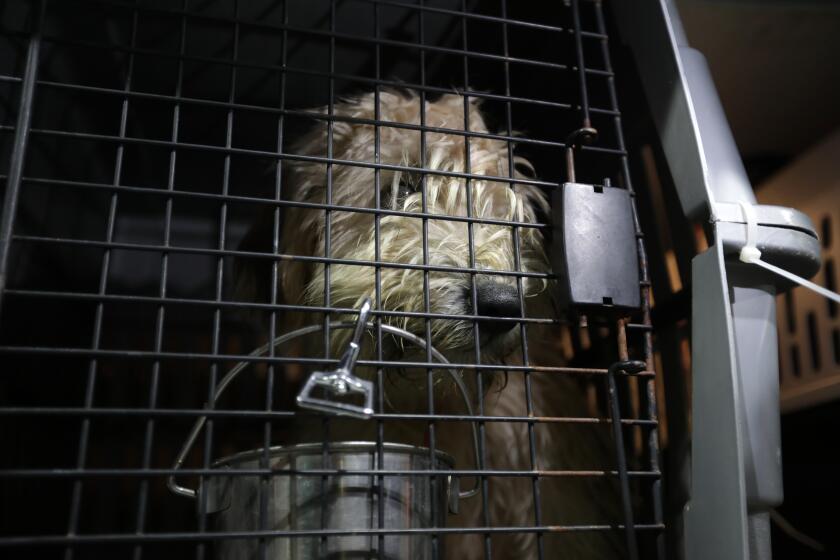Must Reads: Post-Hurricane Harvey, NASA tried to fly a pollution-spotting plane over Houston. The EPA said no
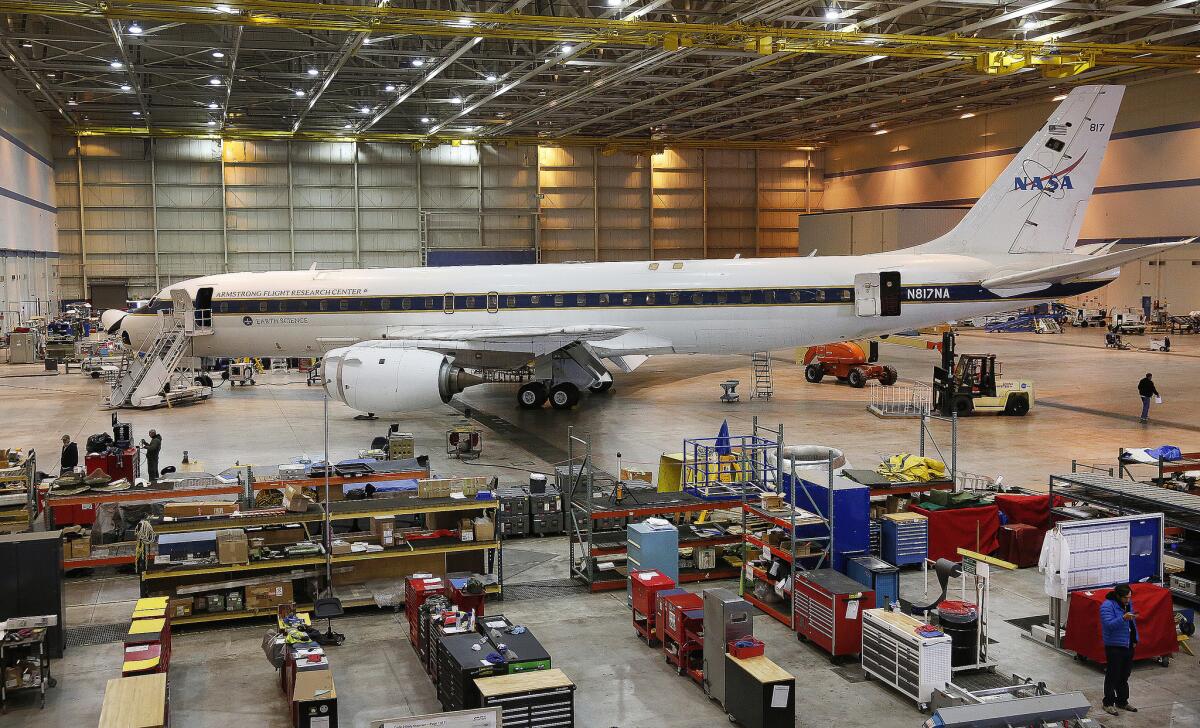
In the weeks after Hurricane Harveyâs catastrophic sweep through the Houston area â which resulted in chemical spills, fires, flooded storage tanks and damaged industrial plants â rescue crews and residents complained of burning throats, nausea and dizziness.
Fifteen hundred miles west in the high desert city of Palmdale, NASA scientists were preparing to fly a DC-8, equipped with the worldâs most sophisticated air samplers over the hurricane zone to monitor pollution levels.
The mission never got off the ground. Both the state of Texas and the EPA told the scientists to stay away.
According to emails obtained by The Times via a public records request and interviews with dozens of scientists and officials familiar with the situation, EPA and state officials argued that NASAâs data would cause âconfusionâ and might âoverlapâ with their own analysis â which was showing only a few, isolated spots of concern.
âAt this time, we donât think your data would be useful,â Michael Honeycutt, Texasâ director of toxicology, wrote to NASA officials, adding that low-flying helicopters equipped with infra-red cameras, contracted by his agency, would be sufficient.
EPA deferred to Honeycutt, a controversial toxicologist who has suggested air pollution may be beneficial to human health.
The response stunned NASA scientists, many of whom had flown similar missions in the past, including over the 2010 Deepwater Horizon oil spill in the Gulf of Mexico.
An EPA spokesman said the decision to wave off the Hurricane Harvey mission was made by Texas state officials, whose own pollution monitoring efforts included mobile bus units and crews with hand-held devices on the ground.
But NASA scientists say that, had the DC-8 been deployed, it would have provided the most comprehensive and detailed analysis of air quality in the region, allowing for a more thorough understanding of the situation.
âItâs totally possible weâd have found nothing at all to be concerned about,â said Tom Ryerson, a National Oceanic and Atmospheric Administration researcher who had previously been part of the Deepwater Horizon mission. âBut at least weâd have known that,â he said, âwithout a doubt.â
Some see the EPA decision as part of a pattern.
Since taking office, the Trump administration has rejected and suppressed established science, partnered with fringe researchers and embraced industry-backed views â including appointing a former coal lobbyist as its new EPA administrator.
At the time of the hurricane, the agency was run by Scott Pruitt, who during his tenure targeted dozens of environmental regulations for rollback, including several focused on air pollution.
âThis is a very clear illustration of the politics of knowledge,â said Scott Frickel, an environmental sociologist at Brown University, referring to the rejection of the NASA jet. âThe EPA Region 6 and Texas authorities donât want to know, so they are passing on something really important about urban-scale disasters.â
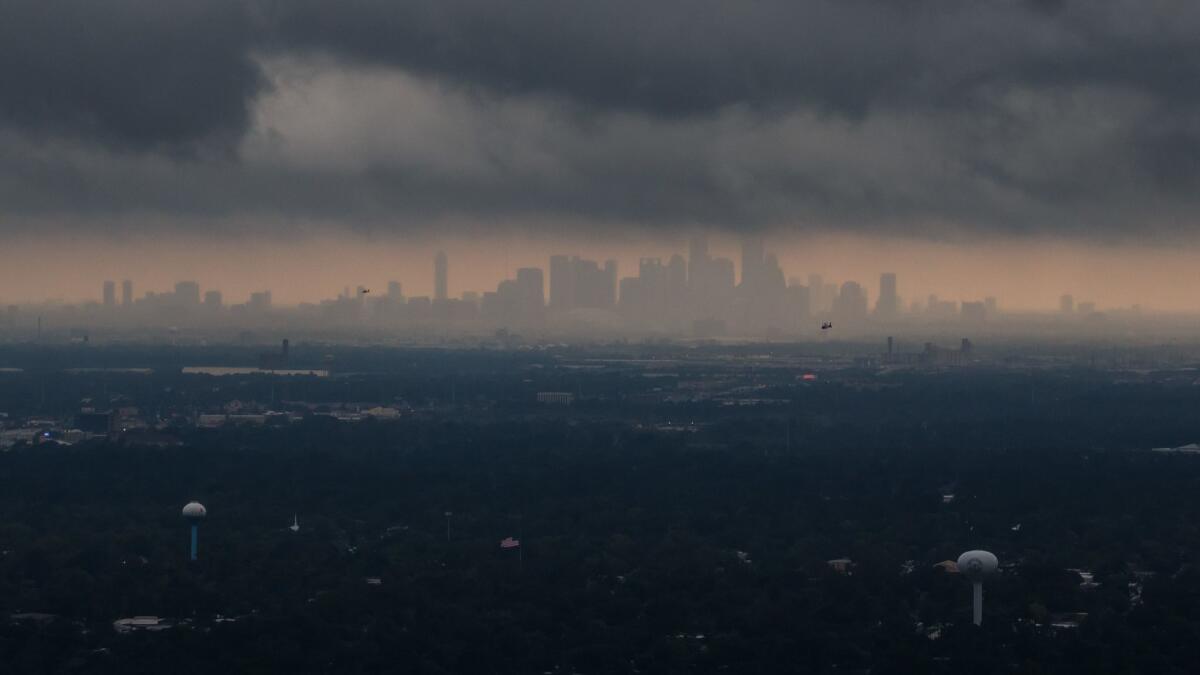
Clouds of benzene over Houston
On Aug. 25, 2017, Harvey stalled over the Texas coast, unleashing record rainfall on Houston and Galveston.
The area is one of the most heavily concentrated industrialized hubs in the nation, home to thousands of petroleum refineries and chemical manufacturing plants and more than a dozen Superfund sites. Over the next eight days, the storm dumped more than 60 inches of rain on some areas of the region, pummeling it with wind gusts in excess of 150 mph, according to the U.S. Geological Survey and EPA.
On Aug. 28, Gov. Greg Abbott suspended state emission rules, including those governing air pollution, after the Texas Commission on Environmental Quality argued they would impede disaster response. The rules remained suspended for the next seven months.
When the storm finally moved north and east on Sept. 4, the level of environmental destruction and confusion on the ground was unprecedented.
Smokestacks, pipelines and generators had been damaged or destroyed. Storage tanks filled with toxic chemicals were battered and leaking. Superfund sites were flooded, spilling hazardous waste into nearby rivers, streams and neighborhoods.
Officials from the EPA and the state environmental agency, which had shut down their stationary air monitors to avoid storm damage, maintained the air quality was fine. In addition to using ground technology, they flew in a single-engine prop plane that took photos and used infrared technology to detect chemical plumes in the area.
Despite EPA claims that pollutants were âwell below levels of health concern,â residents and rescuers complained of the fumes. Clouds of benzene and other cancer-causing chemicals floated over the city, according to analyses by environmental groups and news reports.
As those reports spread, researchers with NASAâs Atmospheric Tomography Mission program thought they could help.
Since 2016, the chemistry laboratory has flown more that 197,000 miles around the globe, sampling hundreds of unique airborne gases or particles.
The team was about to embark on its fourth and final mission around the globe and had planned a six-hour test flight for Sept. 14 that would take them east to Lamont, Okla., where theyâd carry out compass measurements, before heading back to Palmdale.
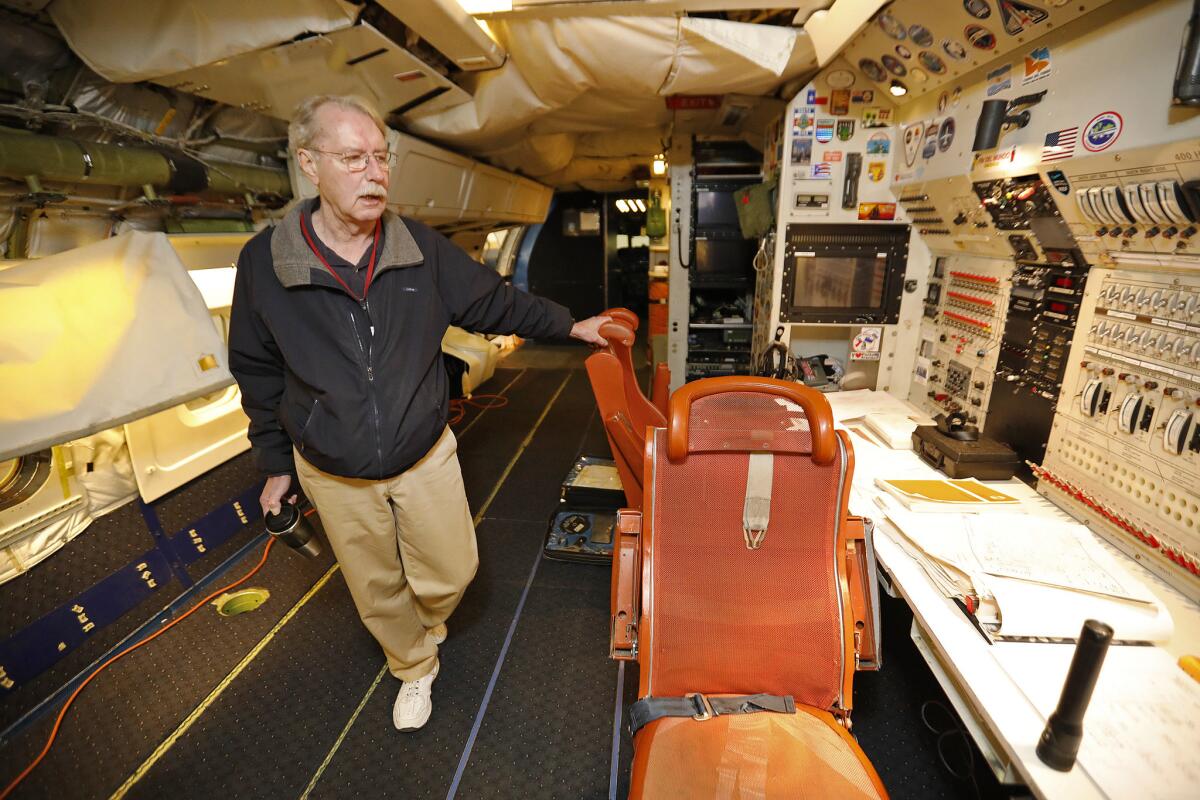
The laboratory inside the DC-8, when running at full capacity, hosts roughly three dozen scientists and engineers and a crew of eight. Tubes, spigots and flasks on the aircraftâs exterior guzzle in air samples as the jet bobs up and down between its lowest altitude of 500 feet and its ceiling at 40,000 feet.
âWhen fully equipped ⊠it bristles like a porcupine with probes, tubes and laser equipment sticking out of the hull and windows and dangling off the wings â all of them plugged into instruments on board,â said Chris Jennison, the DC-8 mission manager, during a recent tour of the plane.
It is the most precise and comprehensive airborne air quality lab on the planet, according to scientists familiar with the equipment. Where the EPAâs air pollution single-prop plane can gather some basic chemistry of about two dozen species of air-pollutant compounds, the NASA jet can analyze more than 450.
As the team watched the disaster unfold, Paul Newman, chief scientist of NASAâs Earth Science Division, suggested they divert their test run and fly over Houston. The timing was serendipitous. The DC-8 was fully equipped and ready to go.
âWe agreed this would be a good opportunity to support the Hurricane Harvey recovery effort,â Lawrence Friedl, NASAâs director of Applied Sciences wrote in a Sept. 8, 2017 email to the agencyâs then-acting Administrator Robert Lightfoot and others. Indeed, NASAâs press shop was touting its coordination with the hurricane emergency response.
But over the next few days, it became clear neither the EPA nor the state of Texas saw this particular offer in that same light.
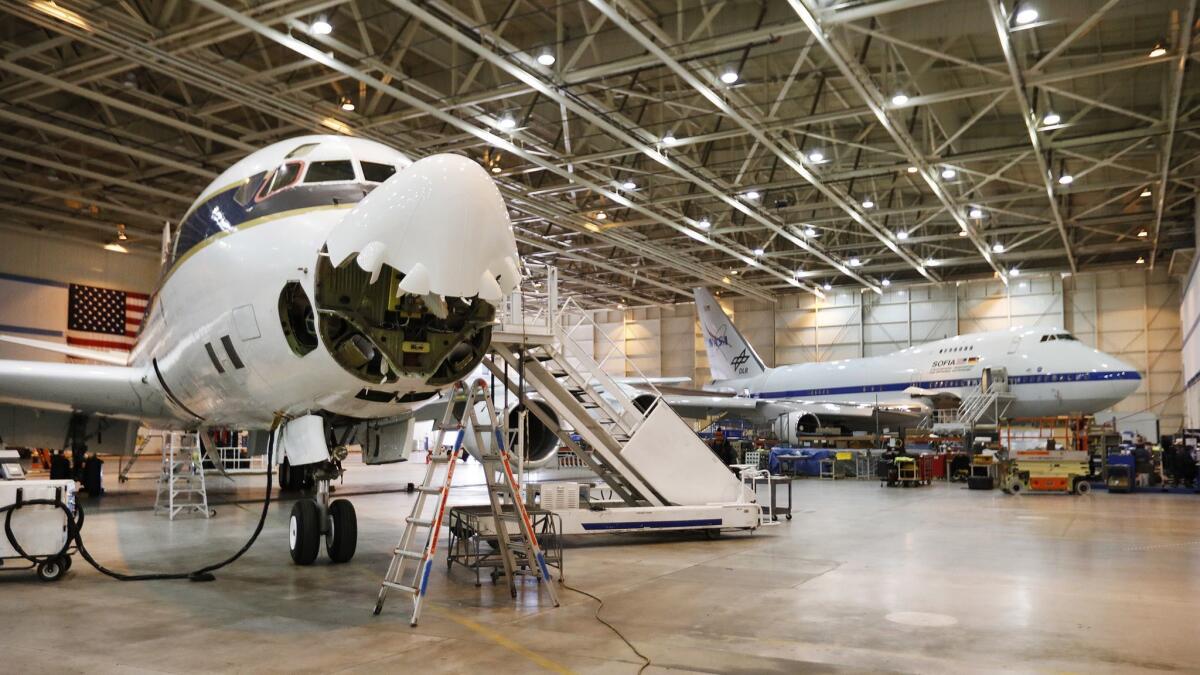
Emails detail how EPA officials fretted about âoverlapsâ
On Sept. 9, David Gray, the EPAâs deputy regional administrator in Texas and leader of the agencyâs emergency response, wrote to NASA and Texas officials that he was âhesitantâ to have the jet âcollect additional information that overlaps our existing effortsâ until he learned more about the mission. He noted that media and nongovernmental organizations were releasing data that was âconflictingâ with the state and EPAâs.
NASA scientists tried to reassure Gray and Honeycutt that they wouldnât do anything to hinder the data collection efforts. They said they wouldnât focus on particular facility emissions but instead assess whether large changes in air quality had occurred following the disaster. They also promised not to deliver their data to the media, although they underscored it would eventually be made public.
In addition, they noted, similar interagency missions had succeeded in the past. In 2010, a NOAA plane with a similar payload aided the EPA in assessing air quality over the Deepwater Horizon spill. The data showed Gulf air was OK to breathe, assuaging the concerns of rescue operators and emergency responders.
Jane Lubchenco, the former NOAA administrator who oversaw the Deepwater Horizon mission, said the cooperation and tone of discussion then âwas set at the highest level: The president made it clear he wanted teamwork throughout.â
âThere is no good reason why that cannot happen most of the time,â she said.
But the NASA scientistsâ assurances didnât work.
The key decision-maker was Honeycutt, known for his energy industry-friendly views on toxic chemicals and pollutants. Six weeks later, Trumpâs EPA would appoint Honeycutt chairman of the agencyâs Science Advisory Board, an independent panel of scientists charged with providing advice to the agencyâs administrator.
On Sept. 11, Honeycutt wrote in an email to NASA and EPA officials that state data showed no sign for concern, and âwe donât think your data would be useful for source identification while industry continues to restart their operations.â
Gray agreed with Honeycutt: âEPA concurs with your assessment and we will not plan to ask NASA to conduct this mission.â
The NASA team was stupefied.
âNASA does NOT need EPA approval,â Newman wrote to the teamâs project coordinator, Barry Lefer. âWe certainly should notify and potentially coordinate, but we donât need approval.â
His superiors disagreed, and that evening Michael Freilich, the director of NASAâs Earth Sciences division, called off the flight. Freilich retired on Feb. 28.
The agency had âreceived emails from both TCEQ and EPA stating unambiguously that they do not want NASA to use the DC-8 for any data acquisition,â he wrote. âI am personally sorry.â
In recent interviews, EPA and Texas officials maintained the NASA flight would not have provided useful information.
âNASA is equipped to gather atmospheric chemistry data, not ground-level data, which is why we declined their offer,â Honeycutt wrote in an email.
âI did not tell NASA they could not fly their DC-8,â he said. âI donât have that kind of authority; Iâm just a state employee.â
John Konkus, an EPA spokesman, said the EPA didnât deny the offer, either.
âThis is EPA facilitating the decision-maker, which in this case was the state,â he said. EPA, he said, was âsatisfied with the air monitoring technology that EPA had and [that the state] requested we deploy.â
An investigation from the Associated Press and the Houston Chronicle showed there was widespread, unreported pollution and environmental damage in the region. The team identified more than 100 Harvey-related toxic releases, most of which were never publicized or vastly understated, including a cloud of hydrochloric acid that leaked from a damaged pipeline and a gasoline spill from an oil terminal that formed âa vapor cloud.â
Even if the DC-8 flight had not detected that pollution, it is unsettling that NASA was prevented from even looking, Newman said.
âScience is about numbers,â he said. âAnd if youâre unwilling to look, youâre not doing science.â
More to Read
Sign up for Essential California
The most important California stories and recommendations in your inbox every morning.
You may occasionally receive promotional content from the Los Angeles Times.






